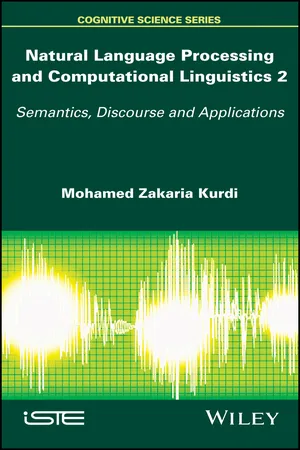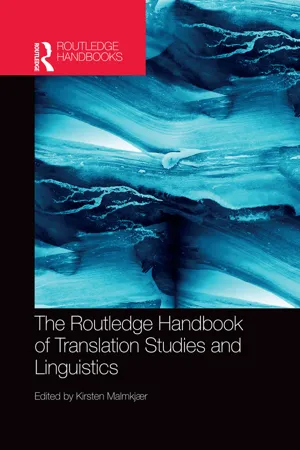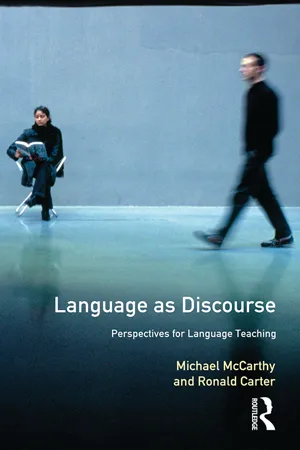Languages & Linguistics
Third Paragraph
The third paragraph discusses the concept of language acquisition, which refers to the process of learning a language. It highlights the difference between first language acquisition, which occurs naturally in childhood, and second language acquisition, which can occur at any age and often requires more conscious effort. The paragraph also mentions the role of input and interaction in language acquisition.
Written by Perlego with AI-assistance
Related key terms
3 Key excerpts on "Third Paragraph"
- eBook - ePub
Natural Language Processing and Computational Linguistics 2
Semantics, Discourse and Applications
- Mohamed Zakaria Kurdi(Author)
- 2017(Publication Date)
- Wiley-ISTE(Publisher)
3 The Sphere of Discourse and Text3.1. Discourse analysis and pragmatics
3.1.1. Fundamental concepts
As noted by [VAN 85], the practice of analyzing speech, literature or simply language goes back more than 2000 years. The first works had a marked normative dimension and were located in the domain of rhetoric. They were intended to formulate rules for planning, organizing and delivering spoken communications in a legal or political context.In the context of modern works in linguistics, notably since Zellig Harris [HAR 52], it is generally accepted that the sentence cannot be the maximal unit of linguistics studies. Consequently, many linguistic works consider that linguistic productions are made up of a set of interconnected utterances whose interpretation depends on the situation of communication. Some use the term discourse to designate such a set. Unfortunately, this term is one of the most polysemic terms that exists. The most precise definitions that have been proposed for it are those that have been formulated negatively in opposition to other linguistic entities.One of the reasons behind this divergence is the multitude of movements and disciplines that have an interest in extra-sentential phenomena: functional linguistics, cognitive linguistics, sociolinguistics, textual linguistics, discourse analysis, etc. The common point between all of these approaches is the rejection of the Chomskyan idea expressed in his Standard Theory [CHO 57] according to which the sentence is the maximal linguistic unit.Before addressing the key concepts in the domain of discourse analysis, it is pertinent to review the terminology.3.1.1.1. Discourse versus speech
Like the French linguist Gustave Guillaume, some consider that discourse, being the language implemented or the language used by the speaking subject, can be considered to be a synonym of speech (see [DUB 71]). Linguists in this current prefer the opposition language/discourse to the Saussurian dichotomy language/speech because the term speech refers exclusively to spoken language. - Kirsten Malmkjaer, Kirsten Malmkjaer(Authors)
- 2017(Publication Date)
- Routledge(Publisher)
This shift was motivated by several factors. First, as in Translation Studies, there was an increasing recognition that isolated sentences were not generally natural units of communication. When people use language in speech and writing, they use connected sequences of sentences. Next, it was apparent that many important concerns of linguistic research (e.g., pragmatics and semantics) could not be fruitfully studied without also studying the context of sentences (Carstens 2001). By context here we mean (1) the structural and semantic relationships of a sentence in a group of sentences to the sentences that precede and follow it, and (2) the pragmatic situational context surrounding the production of sentences. These two meanings of context have defined two directions in text linguistics broadly considered, one concerned with formal description of the relationships between sentences in texts as an extension of formal grammars (text grammars), and the other with how texts are related to their situational and social contexts. The latter has had the greatest influence on translation and interpreting studies. Discourse analysis is closely related to text linguistics, in that the object of study is also language use beyond the boundaries of discrete sentences. Both are concerned with the social contexts of language use, with the social purposes and functions of language in social interaction. It is, in fact, difficult to make a clear distinction between the concerns of discourse analysis and those of text linguistics without making a distinction between discourse and text. Some scholars have argued for a distinction based on modality (spoken vs. written). Others have said that texts are non-interactive while discourses are interactive- eBook - ePub
Language as Discourse
Perspectives for Language Teaching
- Michael Mccarthy, Ronald Carter(Authors)
- 2014(Publication Date)
- Routledge(Publisher)
3 Linking the levels: grammar, lexis and discourse 3.0 IntroductionChapters 1 and 2 have been very much concerned with the larger-scale phenomena of discourse: genres, registers, patterns, modes and theme-rheme structures across texts. Throughout both chapters, we constantly implied that such phenomena cannot be properly understood without examining the effects of lexical and grammatical choices at a very delicate level. In this chapter, we turn to look in greater detail at some aspects of grammatical and lexical choice which we feel illustrate particularly well that the lexico-grammatical system and the discourse patterns of a language are not two separate things, but that, rather, we should think of all language as discourse. This may involve rethinking our attitudes to traditional lexico-grammatical approaches, but the result is an integrated view of discourse. The grammatical and lexical categories we have chosen to look at in this chapter are not comprehensive; they are just taken as examples of an approach which, we feel, could be applied to any lexical or grammatical feature. But we accept that a comprehensive discourse-grammar of English and a convincing discourse-based description of lexical structure for English remain to be written.3.1 Grammar and discourse managementThe description of cohesion in English, associated with Halliday and Hasan (1976), with revisions by Hasan (1984) and further expansion by Halliday (1985) is well established in text analysis as an account of one of the principal ways in which sentences are linked coherently to one another. In applied linguistics and language teaching, cohesion has become one of the elements deemed to be central to the discoursal components of the syllabus, which we discuss further in Chapter 5
Index pages curate the most relevant extracts from our library of academic textbooks. They’ve been created using an in-house natural language model (NLM), each adding context and meaning to key research topics.


